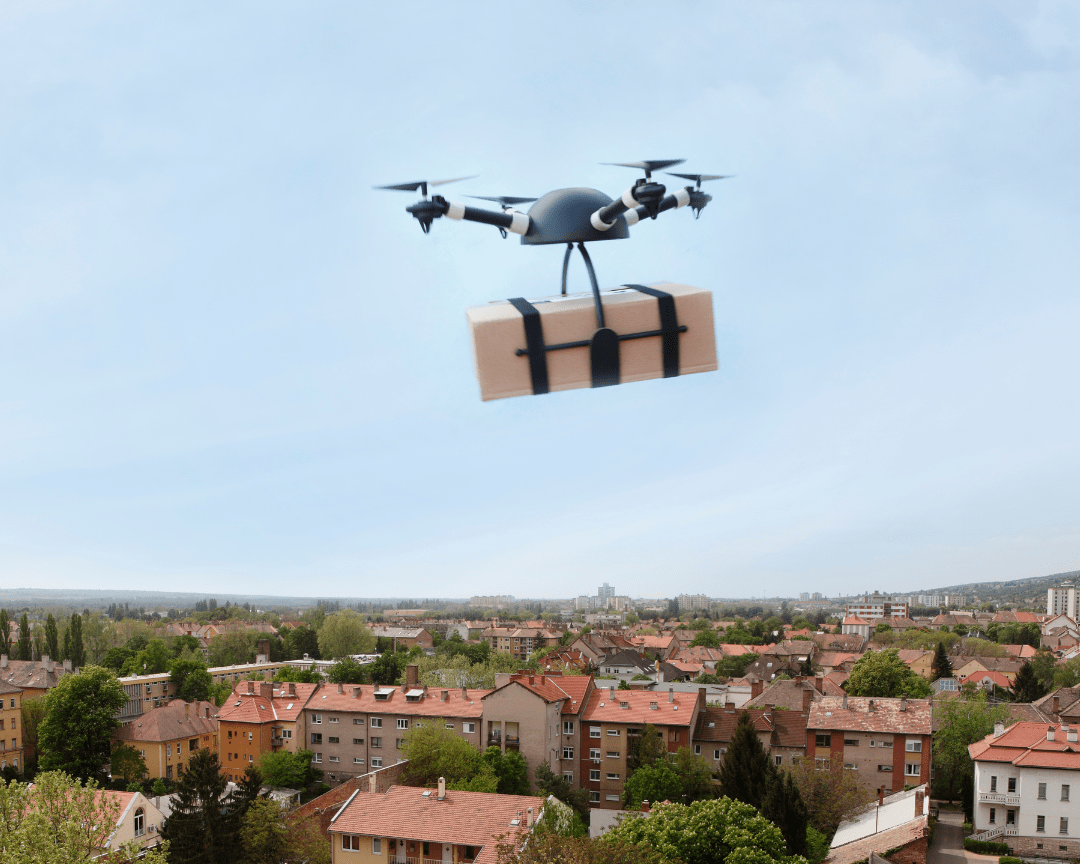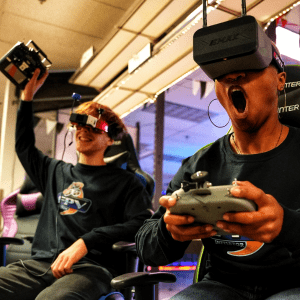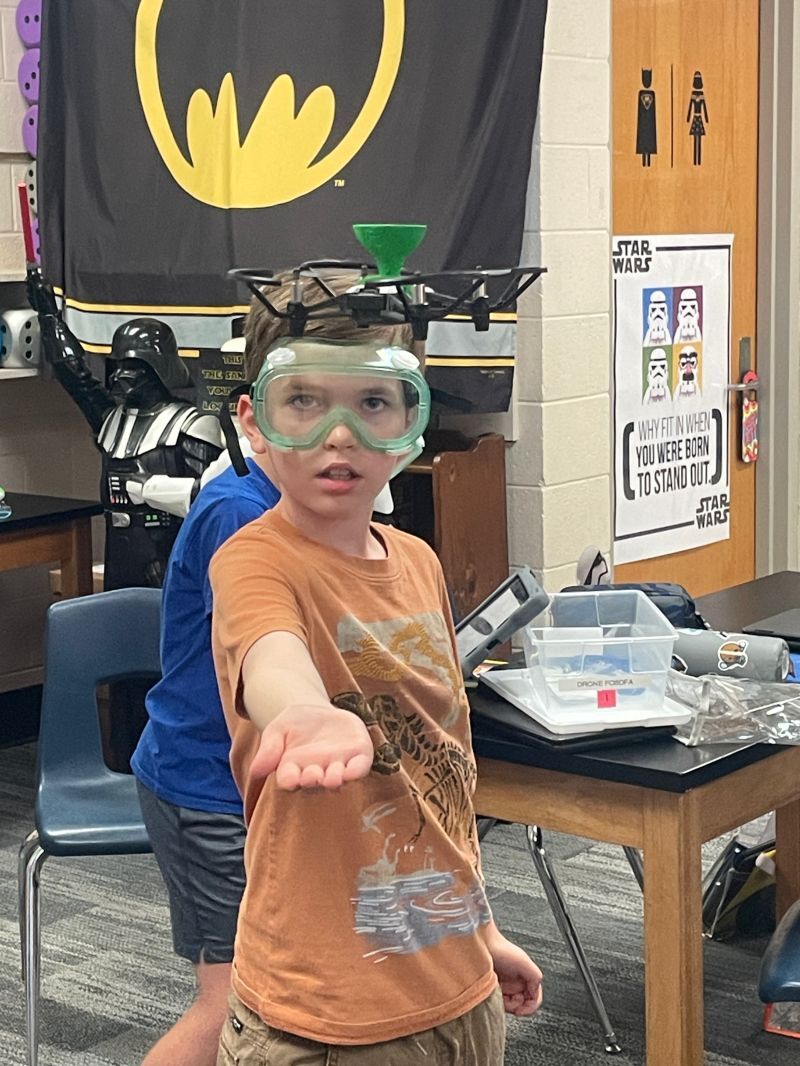Drones are saving lives. With the rise in commercial drone use around the world, people are discovering how drones can be used for good in more ways than ever.
While some might picture drones as futuristic, novel aircraft that are going to deliver your packages, these unmanned aerial vehicles (UAVs) are actually supporting life on earth in consistent and amazing ways.
Read on to learn how drones and healthcare are working together to serve humanity, and what the future might hold.
How are Drones Used in Healthcare?
Drones can be used to replace manual operations throughout many aspects of the healthcare industry. From rapid deliveries to elderly assistance, here are some of the up-and-coming methods drones are being the most widely used in the medical field.
Drones in Medical Research
Because drones are small and programmable, their use in medical research is beneficial. Advanced software can collect real-time data and help in the research process, and drones can observe larger numbers of subjects in a short amount of time.
Small medical drones can be automated to record research findings and even trigger computer commands. They can be used in place of or alongside robotics in the clinical lab. Drones can also be used to help navigate important diagnostics tests from point A to B, bringing faster results. Some medical drones even give surgeons an extra hand during surgery.
Drones in Telehealth Services
In 2021, the University of Cincinnati initiated a prototype of drones that were used to support telehealth medical services. The drones arrived at patients’ homes carrying medication and equipped with a camera and small live-feed screen, where doctors would inspect patients and communicate “person to person” in real-time.
Drone Delivery in Medicine
One of the most common ways drones are being used in medicine today is vital delivery to remote locations. Drones can be flown by remote control or programmed to reach a destination that isn’t safe for human pilots. Drones are fast, leave little room for error, and promote sanitary environments when transporting sensitive medical supplies.
From hazardous materials to standard medical supplies to organ donations, drones bring relief to healthcare professionals and needy patients virtually anywhere. Since nearly 50% of the world has limited access to adequate healthcare, drones may be an affordable alternative to in crucial times.
Drone Ambulance Missions
While ambulance drones are still being prototyped, emergency rescue initiatives are already a reality in some areas. To fly medical drones safely there are many aviation laws and regulations, which is one challenge of medical drones today. While drones carrying gurneys would be helpful, there’s still a lot of work to be done before that becomes a reality. But that work is being advanced in certain states; for instance, New York recently opened a 50 mile drone corridor for commercial use.
Where medical drone flight is lawful, emergency missions fulfill call-and-response to those who need rapid treatment for ventricular fibrillation. Automated external defibrillators (AEDs) can be hard to locate in time-sensitive situations, and drones pose an option to deliver AEDs to people at their location.
Drones for Elderly Aid
With the help of drones, more elderly patients can get the assistance they need. Automated indoor drones with robotic arms can aid in medication distribution, feeding and drinking, cleaning, small household chores, and signaling for emergency personnel if a fall is detected.
This concept is still in development due to concerns about indoor safety and cultural acceptability in different parts of the world.
Healthcare Drones During the COVID-19 Pandemic
For the first time on a large-scale level, drones were put to the test during the COVID-19 pandemic. UNICEF published a paper covering many purposes and use cases for medical drones to combat the coronavirus. Cases include:
- Transportation of lab samples and test kits
- Public space monitoring
- Aerial disinfectant sprays on large surfaces
- Delivery of vaccines
While human-led public safety jobs were limited during global and national lockdowns, drones were one tool to explore what could be accomplished— and prevented— through an unprecedented health crisis.
International Medical Drones Helping Remote Populations
The popular Zipline drone is prevalent in addressing maternity and HIV treatment in Africa. In many locations on the African continent, it can take more than ten days to transport the blood samples of newborns from a care center to a medical lab. This waiting period potentially threatens babies who are HIV positive and may need life-saving medication.
The Zipline drone has also been heavily used to deliver birth control, sanitary products, and fertility medication to remote villages in Nepal, Ghana, and Taiwan. As a U.S.-based company, Zipline readily delivers bulk care items to hospitals in rural populations of the United States.
Island countries and communities such as Fiji, Indonesia, and Madagascar struggle with inconsistent medical supply chains, putting populations at risk during natural disasters and health crises. With medical delivery drones, the impact can be lifted through quick delivery of PPE equipment, medication, food, and other essentials.
The Future of Drones and the Healthcare Industry
With so much potential for serving all types of societies in our modern world, the only limit of healthcare drones at the moment is the development of universal rules that govern their flight.
In the future, we can expect there to be clear standards that include medical drones in aircraft operations. But for now, leading industries like medicine, technology, and science continue experimenting and completing missions that save lives.
Drones and STEM Education for Future Healthcare Careers
Moving forward, drones are only going to grow with the innovations in modern medicine. Technology and medicine are often seen alongside each other in industry development, and the use of drones is no different. This is also why they can be seen so heavily in education spaces today.
With a greater focus on STEM (science, technology, engineering, and mathematics) today, drones have a practical use for schools and medical students.
Join the educational drone movement and help us promote the use of drones to improve the future of humanity. To learn more, reach out to Drone Legends today.




